20 street photography tips every beginner should know.
This guide covers essential street photography tips for beginners. Learn the best focal lengths to use for pixel-perfect shots in street photography.
Street photography tips offered by professional street photographers can vary from one to another. Navigating different opinions can be difficult for beginners, as many don’t yet have a defined style when starting out.
Street photography is often spontaneous and may require photographers to interact with people from time to time. It can be intimidating for shy beginners to start, and it’s certainly not for everyone.
In this article, we will reveal 20 simple street photography tips and other helpful technical information.
14-day free trial. No credit card required.
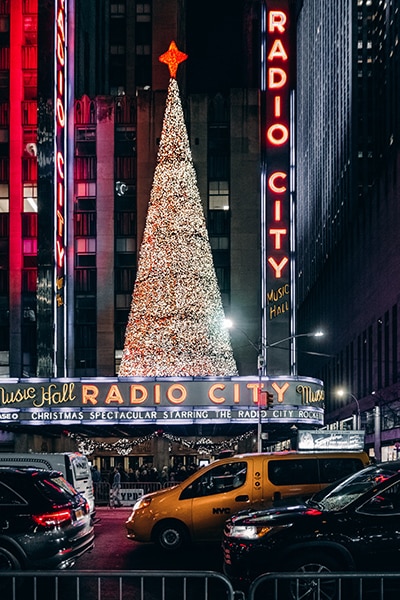
Street photography tips for beginners.
Most street photographers begin shooting street photographs for fun and slowly accumulate technical knowledge & experiences over time. Although photography shooting isn’t rocket science, the learning curve for street photography can be steep.
To flatten that curve, here are 20 street photography basics for beginners:
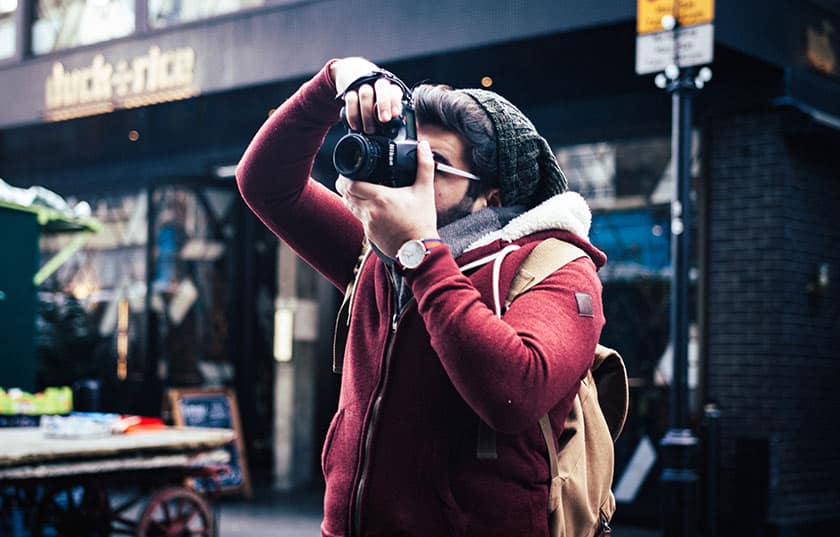
1. Work with what you have.
There are models of high-end DSLR and Mirrorless cameras ranging from thousands to tens of thousands of dollars that are amazing at getting different types of photography jobs done. Unless you’re a very seasoned photographer, a standard camera with the cost of a few hundred is quite sufficient. There’s no need to spend a fortune on a camera for beginners. At this stage, it is more about learning composition and exposure than fancy camera features.
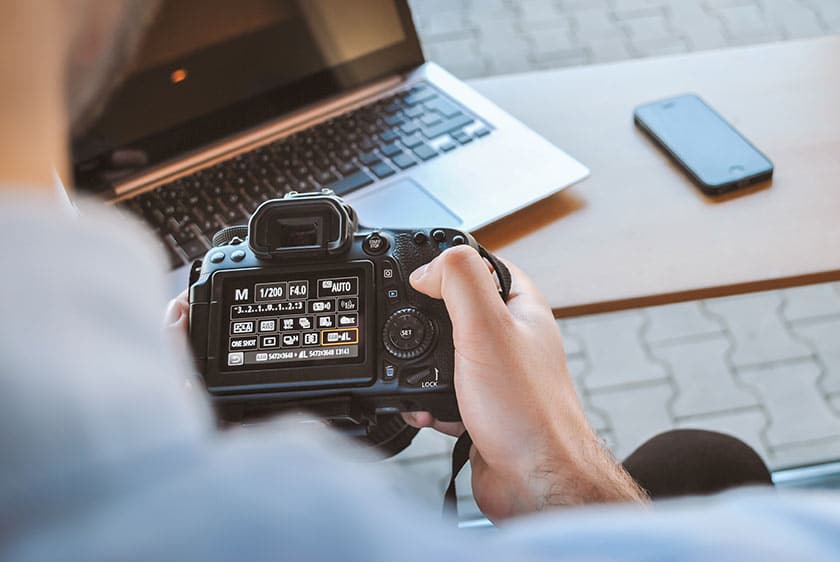
2. Getting familiarized with your gear.
Streets are often busy with loads of activities and elements in the surroundings changing at a lightning speed. Taking the time to learn about the camera settings you hold in your hands will equip you with good knowledge and know which camera setting to adjust to get those street shots.
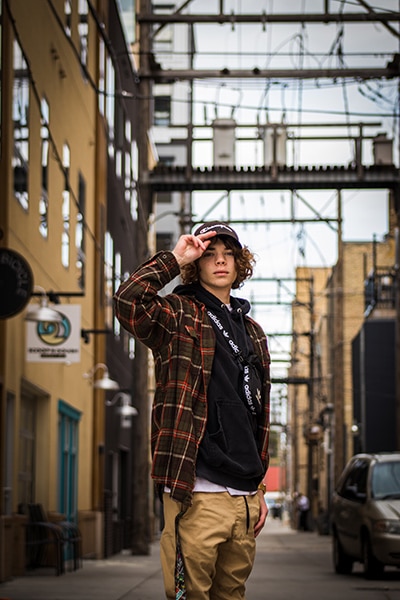
3. Street portraits.
Street portraits are good photographs to take as they tell a unique story and convey hidden emotions to which many people can relate. It can help to find an honest way to compliment the subject before taking a shot. You’ll likely discover that people will often respond positively when you are genuinely interested in their appearance.
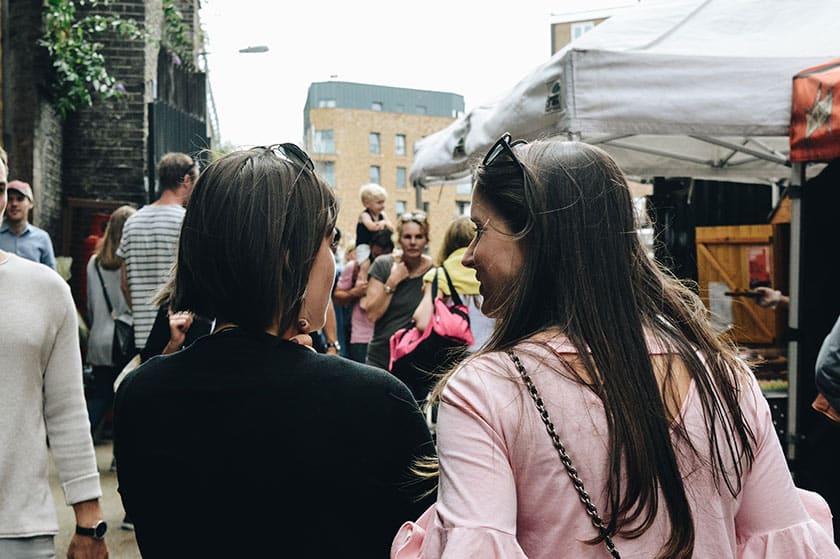
4. Social skills in street photography.
Focus on social skills first if you are not comfortable approaching and interacting with people. Approach people with a mindset to make friends, and don’t be shy to ask people for permission to be in your street photo shots in some situations. People are often flattered when approached to be included in the photos.
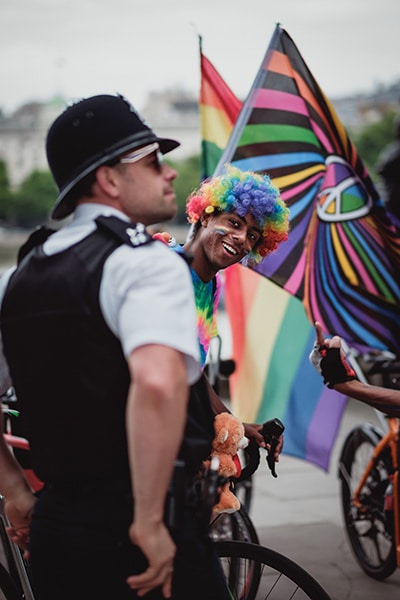
5. Strike up a conversation.
Think about whom you are approaching before striking up a conversation. Commenting on the weather is often a good icebreaker in any situation to start a conversation with anyone. Pay attention to the vibe of a person or a group, and be respectful of other people’s personal spaces during conversations.
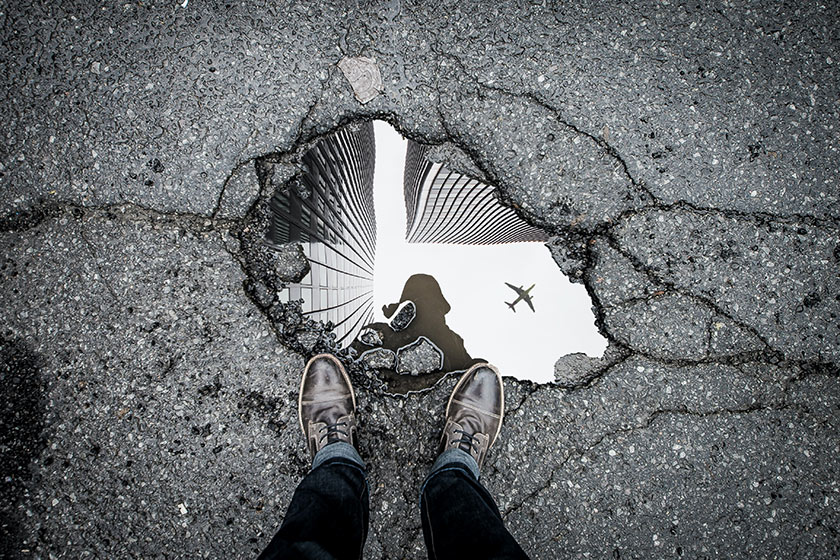
6. It’s about you.
Street photographs often serve as mirrors that directly reflect the photographers’ current mood at the moment when they took the shots. Looking deep within and getting to know yourself will unleash creative potentials in your street photographs that you may not have noticed otherwise.
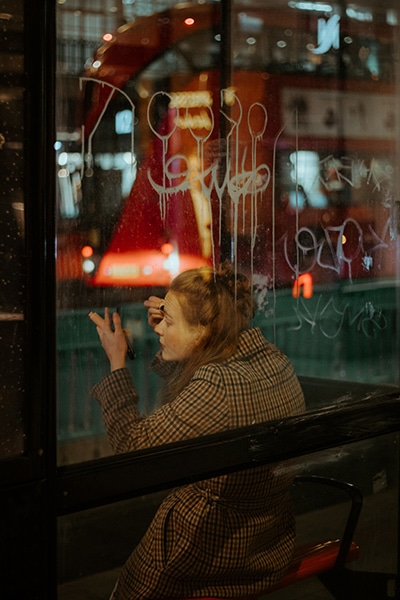
7. Observation, observation, observation.
Skilled photographers are well known for their outstanding ability to observe environmental objects and watch how people interact with them. Start with activities that people routinely do. Let your instincts guide you in visualizing what might happen in your frame, and then snap the shots when the right moment comes.
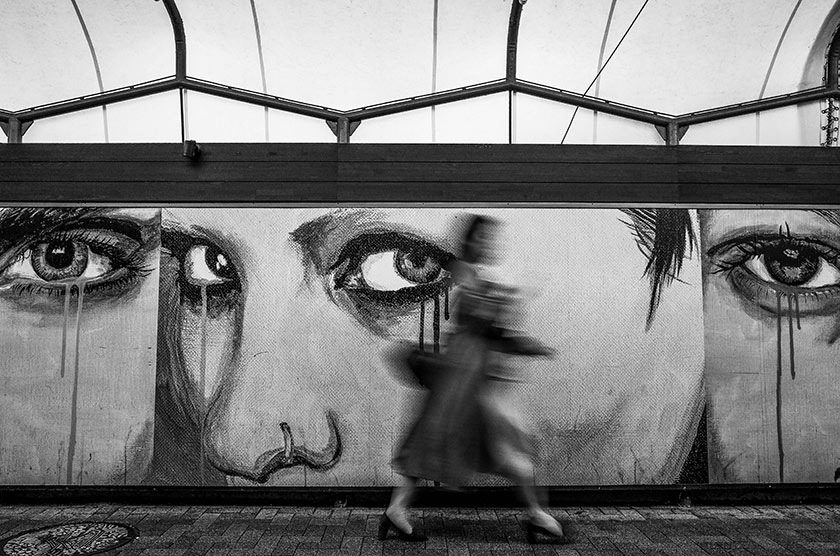
8. Let them come to you.
Avoid spending energy and time chasing after objects in search of good street photographs. Instead, only linger around certain busy street spots and let the actions come to you. This way, you’ll always stand ready and have ample time to capture those unexpected but classic moments.
9. Watch your back.
Always be mindful of your surroundings, learn to identify potential threats, and avoid them are good skills to have. Refrain from bringing too many lenses or cameras with you, dress unobtrusively (no shiny colors like a tourist), and bringing along a friend for shooting at night can lower the risks significantly.
10. Lights and shadows.
Morning and late afternoon lights are great for soft, golden street photographs. Depending on where you live, the light at noon in the northern hemisphere during summer is often quite harsh. Paying attention to and making use of the areas of light and shadow while taking street photographs will give better results.
11. Carry a flash.
When shooting street photographs at night, having a flash in your photography kit could come in handy if your camera doesn’t carry a built-in one. Be sure to adjust the white balance when using a flash and pay attention to the way it mixes with indoor lights. The way you mix available light and your flash can sometimes create undesirable color casts, or when used thoughtfully can make for eye-catching and creative compositions.
12. Know your location.
Pay close attention to local events such as festivals, parades, markets, concerts, or other activities before you leave your home. When shooting photos of houses on the streets that you already know, you could still rediscover new spots by venturing out to other non-mainstream places such as the back streets or alleys.
13. Warm-up stretches.
Sometimes you need to bend your knees or twist your elbow to get into the position with perfect angles before snapping a shot. At times, you may try shooting at wild angles that will put stress on your body. Stretches could warm up your muscles and alleviate the risks of hurting yourself.
14. Look for letters.
By letters, we don’t mean the kind in your mailbox, but alphabet letters of shapes and forms in the environment. This is great for challenging the way you see the world and training your brain to see the ordinary object from a different perspective. Shapes, forms, and textures are all great to consider when creating your composition.
15. Role-play.
No, really. Take the time to imagine you were one of the animals on the street. What would you see if you were a dog? Taking shots at the level close to a dog’s eye can give you a unique angle for street photographs. Try shooting from another subject’s perspective and don’t be afraid to experiment.
16. Awareness
You can increase your awareness by paying attention to the familiar. We filter out things and often outright dismiss ordinary objects because we see them all the time. Taking notes of objects we already know will increase your awareness and allow you to snap photographs that others would have ignored otherwise.
17. Visualize it.
Visualize and edit a photo in your mind first, then get a feel of the scene before snapping that shot. Let your instincts guide you when you visualize a scene. A good visualization helps build anticipation and enables you to get into an ideal position in advance without missing that perfect moment.
18. View by focal lengths.
Practice looking at the street objects and envision how it might look through different focal lengths. In getting used to viewing things through various focal lengths, you can eliminate some of the guesswork. With more practice, you’ll have a better idea which lenses and other gear to bring with you to snap that perfect shot.
19. Try selective focus.
Zone or wide area focusing are great if you’re in the mood for casual street shots as they will focus randomly on a moving subject. Selective focus empowers you to pinpoint where you want that focus to hit if you’re shooting street photographs with a purpose.
20. Don’t follow trends.
Avoid snapping street photos for the sole purpose of gaining popularity on Instagram. You will find that a lot of times, award-winning street photographs aren’t social media worthy. We are all individuals with our own unique visions, so use others for inspiration and focus on how you could do differently rather than replicating someone else.
Choosing a focal length for street photography.
Perhaps the most challenging part for many photographers is figuring out and choosing the right focal length for street photography to shoot street photos. We will share six of the most common prime lenses with varying focal lengths used by professional street photographers.
24mm street photography.
A 24mm street photography lens is lightweight, small, and can capture the wide perspective of a street scene. This lens gives a lot of context, as it tells the audience where the subject is by placing greater emphasis on the environment. Try the 24mm with f/2.8 first if you’re interested in a budget lens.
Distortion is another feature of this lens that many street photographers like to use for their shots. Distortion isn’t always bad and you can use it to your advantage. 24mm street photography lenses can help emphasize or exaggerate the scale of objects, space, and buildings from the streets. Look for leading lines, as the edges will accentuate your shot.
28mm street photography.
Consider this focal length if you want to take street shots in your traveling ventures. Use a 28mm street photography lens when you are inside tight spaces and don’t have room to back up further. You can also use this focal length to snap photos of a scene without chopping off the top or bottom.
The 28mm focal length is ideal for taking street photographs with a little less distortion than what you get from the 24mm. 28mm lenses are great for tightening up the composition and keeping the subject rooted in their surroundings without completely losing the background.
35mm street photography.
Many photographers would consider a 35mm focal length to be a standard lens. It’s wide enough to capture everything you need in an image, and it’s perfect for landmark & street photographs. It’s also fantastic for casual portraits, as the image will give you a feeling as if you were there with the subject.
35mm street photography lenses place equal emphasis on both the subject and the environment. It’s also great if you are looking out for frame within frame shots; however, the downside is it’s not wide enough if you want to emphasize the grandness of a scene.
50mm street photography.
Use this nifty 50mm street photography lens if you only want to bring one lens with you to your street photography ventures without the hassle of carrying multiple lenses. This all-purpose lens will give you elegant portrait shots when you set it on F/1.8, even with the auto-focus on.
85mm street photography.
The 85mm focal length is seen as the most flattering lens for human subjects, especially if you want to emphasize the subjects’ facial features. 85mm street photography lens is also great if you want to incorporate foreground elements into your shot. 85mm can single out your focus with its compression function and draw attention to it.
If you are using an 85mm lens for the first time, be warned that you’ll initially be taken aback by how close everything is. It can be frustrating when you find yourself in tight spaces where you can’t back up to get your shot. However, it does a beautiful job compressing the background when using low apertures, essentially allowing you to hide a messy or distracting environment when shooting street photography portraiture.
135mm street photography.
The 135mm street photography lens will force you to think about your subjects because the background shot with this lens will be blurred. When paired with f/2, you will get amazing bokeh. 135mm renders beautiful, smooth, and out-of-focus areas while keeping your subject sharp. This will noticeably separate your subjects from their surroundings.
Yes, you guessed it right! Street photographers use 135mm lens to take beautiful portrait shots with stunning sharpness. This lens also has high compression to remove all distortion from a subject’s face, and if environmental portraits aren’t your jam, you can hide things out of the frame easier than you could with a wider lens of 24mm.
Best focal length for street photography.
If you know your gear and what type of images you want to capture with that specific lens, then that lens is your best focal length for street photography. It’s that simple.
For beginners with little to no knowledge of street photography, we’d recommend starting with the standard 35mm lens first. As you become more skilled at using a 35mm lens, expand that and experiment with using other types of lenses to take street photographs.
At the end of the day, there isn’t one lens that is the best focal length for street photography. Avoid putting yourself inside a box by thinking only a certain focal length is used exclusively for street photographs.
Challenge yourself to get creative and try things you haven’t seen anyone else doing if you want to make a name for yourself in street photography.
Street Photography Settings
The exposure triangle in street photography settings has three main components: ISO, Aperture, and Shutter Speed. These settings below serve as a general guideline for shooting photos in daylight.
ISO
Depending on the type of camera you use, you can set the ISO low to 100, 200, and 300. Your photo will have more artificial grain if ISO is changed to a higher number and won’t have that crisp look. If you are shooting in a dark alley without much light, then you could increase the ISO number to compensate for that; some adjustments can also be made while editing.
Aperture
Street photography aperture can generally be set to f/8 on a sunny afternoon. If your goal is sharp details throughout much of the frame, feel free to change it to f/11 or f/16 for really bright surroundings. Alternatively, an aperture of f/5.6 could soften your background and draw more attention to your subject; shutter speed or ISO can be adjusted to compensate.
Shutter speed.
Shutter speed represents the length of time the image sensor in a camera is exposed to incoming light. For street photography without a tripod, set your shutter speed to at least 1/250: This will ensure your image is sharp without any hand-held motion blur. Don’t hesitate to change the setting faster if the light circumstance changes, or slower for motion blur or with the assistance of a tripod.
Build an online portfolio website you love.
Put your street photography in the spotlight.